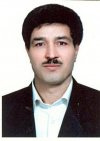| نویسندگان | حسین ارباب |
|---|---|
| نشریه | Springer, Journal of Optics |
| ارائه به نام دانشگاه | University of Kashan |
| نوع مقاله | Full Paper |
| تاریخ انتشار | 2016-7-01 |
| رتبه نشریه | علمی - پژوهشی |
| نوع نشریه | چاپی |
| کشور محل چاپ | هند |
| نمایه نشریه | SCOPUS |
چکیده مقاله
Abstract Many future solar power plants will use very large numbers of parabolic mirror collectors. Moreover there are several practical reasons (cost, thermal radiation and convection losses) to keep the dimensions of a parabolic mirror small. Hence, methods for designing high quality parabolic mirrors at relative low cost, such as the one discussed in this paper, are potentially of great importance. Therefore topics discussed in this article are focused on a fabrication method for non-integrated parabolic mirrors. In this method reflective surface of the mirror is formed with different shapes of small flat or curved mirror elements, MEs. Geometrical shape of MEs may be equilateral triangle, hexagon, square and small segments of parabola. The method which is discussed here consists of several important steps. In the first stage of the method, a two dimensional parabolic model is made. Due to rotating the model about its axis of symmetry, a parabolic surface will be swept in space. The model is used to build up a concrete parabolic mold, CPM. The CPM is used to form the basket (a part of the solid structure where is holding the sheets of parabolic substrate) of the Parabolic Substrate and two secondary male and female templates. These pairs of templates are applying to form the sheet elements of parabolic substrate, PS. Basket and solid Structure of parabolic mirror are fabricated on the CPM. Finally solid Structure is installed on a turn table, TT. Structure of the turn table is such that its turning Surface can be adjusted in two orthogonal directions. Therefore symmetrical axis of the parabola is placed along the plumb line; PL. Alignments of MEs on the PS must be regulated continuously with the help of PL and laser beam, LB. The MEs are connected to the parabolic substrate by silicone glue, SG in coaxial circular bands, CB. In order to regulate the alignments of MEs in correct configuration, laser beam, LB is passed through the focal point of parabolic mirror and reflected back along its symmetrical axis. In this study, it is assumed that the opening diameter of parabolic mirror is much smaller than the diameter of Earth. This assumption is met in all practical situations very carefully. Orientation of MEs on the substrate will be correct if the reflected LB to be along the PL. To control this, the position of the plumbs bob, PB must be adjusted once on a mirror element in each CB and its supporting position is kept constant on a white screen, WS. Deviation of PB from the vertical direction causes the reflected LB to illuminate spot on a screen .Alignment of MEs must be adjusted so that the reflected LB lightening PL supporting point on the screen. For safety reasons, laser spot processing is done by using the CCTV technology. Before hardening SG, alignments of MEs must be changed continuously one by one on the CB.
